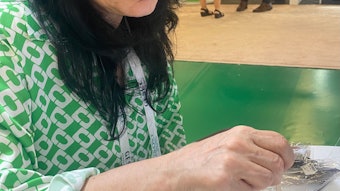
When you think of TV advertising, what comes to mind? Matthew McConaughey driving a Lincoln? Heartwarming commercials featuring “moms” as shot on an iPhone? While those are great examples of prime time ads promoting giant companies with big advertising budgets, you may be surprised to learn that even solo business owners can afford TV advertising.
TV is actually the perfect medium for businesses in the salon and spa industry because it is visually driven.
TV is actually the perfect medium for businesses in the salon and spa industry because it is visually driven. However, many small businesses shy away from TV ads because they think it is prohibitively expensive. Decades ago, TV ads were both costly and highly competitive, largely due to lack of television networks. That meant only companies with big marketing budgets could afford to purchase advertising time. As cable networks expanded and more and people started getting their news through the Internet and social media, the cost of TV advertising in many markets has also decreased. Stations now have to work harder to get more business. So, instead of selling one ad to a big company for $100,000, they break up that same dollar amount among multiple smaller businesses (perhaps 100 different businesses at $1,000 each).
Targeted Coverage
While TV stations used to sell fewer ads and air them over larger geographic areas, that didn’t guarantee optimal results. For example, why advertise acne treatments in a demographic that’s mostly retirement aged? We’ve now realized that targeted demographics are more efficient. If your spa is in Dallas, you’ll want to advertise within about 30 miles to keep the driving proximity reasonable. TV stations now air commercials over smaller geographic areas when it makes sense to do so.
Pay to Play Advertising
You may be even more surprised to learn that not all TV interviews are the result of beat reporters seeking out area businesses they deem worthy of airtime. Today’s market offers something called “pay to play” advertising where, for a set fee, you go down to the TV station and they’ll film you in an interview format. I’m a big fan of pay to play for several reasons.
First, while you may have to pay $500-1,300 for the interview (depending on where you live), you don’t have to pay any production costs. Second, you typically have the opportunity to pre-script the interview questions, meaning you’ll already have the perfect answer—plus, you can really shine the spotlight on your company’s strengths. Third, the format works well because it’s conversational, relaxed and informative, rather than relying on hard sales-y tactics. Finally, pay to play provides you with terrific secondary advertising—not only can you tell your clients to check you out on TV, but also post the link to the televised interview on your website and social media as many times as you like.
Getting Ready for Your Close-Up
In any type of marketing, the key is selling without selling. People buy the tone of your voice before they buy your actual words. It’s all about the tone—if you’re enthusiastic, your passion will come through. In this YouTube link to one of my recent paid interviews, pay attention to my tone (I’m transferring my excitement for my business to the consumer), my personal touch and, of course, before and after photos.
Measuring Results
The biggest challenge with TV advertising is tracking your results, because customers often tell you they found you via the Internet but forget to tell you they saw you on TV first—then checked you out online. Train your staff to coax that information from new clients. "You found us on the Internet? That’s great! And did you also see our TV commercial?" Then record that information in a spreadsheet. Better yet, offer a special discount to customers just for mentioning the TV ad when they book.
Remember, the benefits of TV ads don’t stop with the first round of customers who saw you on TV. If you paid $500 for an ad, and a customer spends only $300—but she tells two of her friends about it and they also book—now your investment has more than paid for itself.
Just as TV advertising has changed dramatically over the past few years, so should your belief that you can afford it as a means to drive new business to your front door.
Top Three Tips for Creating Successful TV Ads
1. Don't focus on selling. Rather than using a TV ad to sell, focus instead on educating, entertaining and building excitement about your business, products and treatments.
2. Hook them. Always start with a catchy lead-in such as "want to look 10 years younger?" Follow- up with plenty of before and after photos.
3. Include point of difference. Include what makes you different from your competitors. For example, "We’re the leading salon for anti-aging facials in the DFW area." Be sure your company’s contact information is easily visible on the screen (company name, logo, website, phone, address, etc.).











